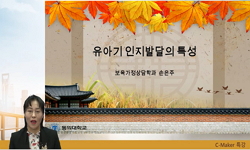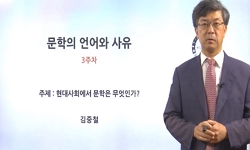The present study aims to explore the meaning of pilgrimage in the context of phenomenology of religion, examining the universal principle of the nature and phenomenon of pilgrimage. Especially this essay examines following issues: (1) What is the sac...
http://chineseinput.net/에서 pinyin(병음)방식으로 중국어를 변환할 수 있습니다.
변환된 중국어를 복사하여 사용하시면 됩니다.
- 中文 을 입력하시려면 zhongwen을 입력하시고 space를누르시면됩니다.
- 北京 을 입력하시려면 beijing을 입력하시고 space를 누르시면 됩니다.

世界의 中心象徵과 聖地巡禮 -宗敎現象學的 接近- = Pilgrimage and Symbol of theCenter of the World: A Religious Phenomenological Approach
한글로보기부가정보
다국어 초록 (Multilingual Abstract)
The present study aims to explore the meaning of pilgrimage in the context of phenomenology of religion, examining the universal principle of the nature and phenomenon of pilgrimage. Especially this essay examines following issues: (1) What is the sacred place? (2) Why does homo religiosus have a nostalgia for the sacred place as the center of the universe? (3) What is the meaning and process of pilgrimage as a religious ritual? (4) What is the contents of religious experience in the process of pilgrimage?The study has a flame of reference of the pattern theory, i. e. religious experience and it’s expression in symbol and ritual. The focus is given on the symbol of the center in sacred place by Mircea Eliade’s theory of hierophany. The main points of this study are as follows:Firstly, the place of pilgrimage should be a sacred center which has a spiritual magnetism for religious believers. The pilgrimage goals, the sacred sites, are meaningful palaces for their religions, such as Jerusalem, Mecca, and Varanasi. The sacred palace is the symbol of the center of the world. A sacred place constitutes a break in the homogeneity of space, and this space is symbolized by the cosmic axis which is located in the middle at the navel of the earth. The holy site and sanctuaries are believed to be situated at the center of the world.
Secondly, the process of pilgrimage has the three steps as the form of rite of passage as Arnold van Gennep proposed, i.e, separation-liminal stage-incorporation. The first separation step is to start journey. Religious believers look beyond local temple or church, and try to call for distant holy place for reverification of their faith. The second liminal stage is the pilgrimage journey itself, sojourning at the sacred place and encounter with the sacred. The third step is home coming. During the Pilgrimage, pilgrims experience release from social ties and a strong sense of fellowship (communitas). Pilgrims are encouraged international cooperation among religious believers. It also promote harmony between believers. Pilgrims believe that they are entitled to travel freely to the sacred place as Guests of Buddha or God- not as guests of any nation or organization.
Thirdly, Pilgrims typically experience deep religious conversion during the sacred journey, communicating with the ultimate, and they are making a pilgrimage in atonement for their karmas or sins. Pilgrims make their spirit pure and deep. Thus, general features of pilgrim’s journey in the world religions are similar. Pilgrimage is universal phenomenons in any culture.
국문 초록 (Abstract)
본 논고는 성지순례의 의미를 종교현상학적 관점에서 접근하여 순례의 본질과 그 현상에 대한 보편적 원리를 탐색해 보려는 데 그 목적이 있다. 본 연구는 성지순례와 관련된 다음의 문제를...
본 논고는 성지순례의 의미를 종교현상학적 관점에서 접근하여 순례의 본질과 그 현상에 대한 보편적 원리를 탐색해 보려는 데 그 목적이 있다. 본 연구는 성지순례와 관련된 다음의 문제를 중심으로 고찰하였다. 첫째, 거룩한 장소란 무엇인가? 둘째, 종교적 인간은 왜 우주의 중심인 성소에 접근하고자 하는 향수를 지니고 있는가? 셋째, 성지순례의 종교의례적 의미와 과정은 무엇인가? 넷째, 성지순례의 종교경험적 의의는 무엇인가? 본 연구의 분석의 틀로는 종교상징, 종교의례, 종교경험 등의 유형론에 기초하여 이론을 전개하였다. 거룩한 장소가 종교적 인간에게 주는 중심의 상징적 의미는 주로 미르치아 엘리아데의 공간적 히에로파니 이론을 중심으로 고찰하였다. 성지순례의 종교적 의미와 특징을 정리해 보면 다음과 같다.
첫째, 순례장소의 거룩함이다. 순례의 목적지는 성인의 발자취가 담겨있거나 聖所로서의 磁力이 있어야 한다. 성지는 엘리아데의 지적처럼 세계의 중심으로서의 상징적인 역할을 하고 있다. 종교적 인간은 聖所에서 우주의 중심축을 찾고자 염원한다. 종교성지는 중심에의 신앙을 상징한다. 세계의 중심에 가까이 살기를 원하는 종교적 인간의 심리는 성지순례를 떠나게 하는 원동력이 된다. 둘째, 성지순례는 복합적인 종교의례로서 정신적, 육체적, 물질적 정성과 노력이 결집된 신앙이다. 순례의 과정은 통과의례와 같은 분리와 移行, 그리고 統合의 구조를 지니고 있다. 셋째, 성지순례는 종교적 회심을 촉진시키고 더 깊은 종교체험을 유발하는 여행이다. 순례자는 성지의 중심에서 종교의 창시자나 성인들과 깊은 내면의 대화와 영적 교류를 경험케 한다. 그리하여 영적 정화와 신앙심의 증장으로 자신의 종교적 구원을 확신하게 되는 회심의 계기를 얻는다. 성지의 청정한 정기와 합일되어 종교적 성스러움에 계합되는 경지를 체험하는 것이다.
참고문헌 (Reference)
1 최원석, "한국불교와 풍수" 10 : 2004
2 고익진, "한국고대불교사상사" 동국대학교 출판부 1985
3 김용표, "포스트모던시대의 불교와 종교교육" 정우서적 2010
4 Arnold van Gennep, "통과의례: 태어나면서부터 죽은후까지" 을유문화사 2000
5 Max Müller, "종교학입문" 동문선 1995
6 유요한, "종교적 인간,상징적 인간" 이학사 2009
7 이원규, "종교사회학의 이해" 나남출판 1997
8 황의갑, "이슬람의 성지순례에 대한 연구" 한국이슬람학회 18 (18): 33-52, 2008
9 권숙인, "이세신궁 참배의 성(聖)과 속(俗):‘세상유람’에서 ‘문화관광’으로" 33 (33): 2000
10 "아비달마구사론(T29)"
1 최원석, "한국불교와 풍수" 10 : 2004
2 고익진, "한국고대불교사상사" 동국대학교 출판부 1985
3 김용표, "포스트모던시대의 불교와 종교교육" 정우서적 2010
4 Arnold van Gennep, "통과의례: 태어나면서부터 죽은후까지" 을유문화사 2000
5 Max Müller, "종교학입문" 동문선 1995
6 유요한, "종교적 인간,상징적 인간" 이학사 2009
7 이원규, "종교사회학의 이해" 나남출판 1997
8 황의갑, "이슬람의 성지순례에 대한 연구" 한국이슬람학회 18 (18): 33-52, 2008
9 권숙인, "이세신궁 참배의 성(聖)과 속(俗):‘세상유람’에서 ‘문화관광’으로" 33 (33): 2000
10 "아비달마구사론(T29)"
11 이기락, "신앙생활과 성지순례:순례사목을 중심으로" (57) : 2006
12 Joachim Wach, "비교종교학" 민음사 1988
13 김용표, "불교와 종교철학" 동국대학교 출판부 2002
14 우혜란, "동시대의 순례와 성지에 대한 고찰" 27 : 2008
15 류경희, "논문 / 바라나시 ( 베나레스 ) - 힌두 성지의 종교문화적 의미와 기능 -" 종교문제연구소 (6) : 109-130, 2000
16 최화선, "고대 후기 그리스도교 성지의 중층적 종교성 in: 종교와 역사" 서울대학교 출판사 2006
17 김홍철, "계룡산(鷄龍山)과 승지신앙(勝地信仰)" 한국종교학회 (52) : 29-51, 2008
18 구본식, "가톨릭 성지순례" (27) : 2002
19 김인덕, "草木成佛論" 25 : 1985
20 "法界圖記叢髓錄(T45)"
21 "大般涅槃經 法顯譯(T1)"
22 김용표, "佛敎硏究를 위한 宗敎學의 意味와 役割" 한국불교학회 (33) : 383-402, 2003
23 一然, "三國遺事" 교문사 1993
24 Pain,Crispin, "Whose sacred place? Response to Jane Samson" 2-1 : 2006
25 Preuss,J ames B, "Vereration and Merit-Seeking at Sacred Place: Buddhist Pilgrimage in Contemporary Thailand" University of Washington 1974
26 Smith,Zonathan,Z, "To take Place: Toward in Ritual" University of Chicago Press 1987
27 Joseph M.Kitagawa, "Three Types of Pilgrimage in Japan In Studies in Mysticism and Religion Presented to Gershom G.Scholem" Magnes Press 1967
28 Jonathan Z.Smith, "The HarperCollins Dictionary of Religion" Harper Collins 1995
29 Margry, Peter Jan, "Shrines and Pilgrimage in the Modern World. New Itineraries into the Sacred" Amsterdam University Press 2008
30 Elide, "Sacred and the Profane: the Nature of Religion" A Harvest Book 1957
31 Singh,Rana P.B, "Sacred Space and Pilgrimage in Hindu Society: The Case of Varanasi in Sacred Places, Sacred Spaces" Geoscience Publications 1997
32 Alen E. Morinis, "Sacred J ourneys: The Anthropology of Pilgrimage" Greenwood Press 1992
33 Mircea Eliade, "Saced and the Profane: The Nature of Religion" Harcourt 1957
34 Coleman, Simon, "Pilgrimage: Past and Present in the World Religions" Harvard University Press 1995
35 Cohen,Erik, "Pilgrimage, centers, centric and excentric" 19 : 2007
36 Smith,Peter, "Pilgrimage in A concise encyclopedia of the Bahá’í Faith" Oneworld Publications 2000
37 Victor Turner, "Pilgrimage as Social Process in Dramas, Field, and Metaphors" Cornell University Press 1974
38 Turner,Edith, "Pilgrimage" 11 : 1987
39 Mircea Eliade, "Patterns in Comparative Religion" Sheed & Ward 1958
40 Mircea Eliade, "Ordeal by Labyrinth: Conversion with Claude-Henri Rocquest" Chicago Press 1982
41 "MN : Majjhima-nikāya"
42 Eck, Diana L., "India’s Tritha: Crossings in Sacred Geography" 20 (20): 1981
43 Victor Turner, "Image and Pilgrimage in Christian Culture" Columbia University Press 1978
44 Surinder Mohan Bhardwaj, "Hindu Places of Philgrimage in India: A Study in Cultural Geography" Munshiram Manoharlal Publishers 1973
45 Cave,David, "Eliade’s Interpretation of Sacred Place and its Roletoward the Cultivation of Virtue in Changing Religious Worlds: The Meaning and End of Mircea Eliade" SUNY Press 2001
46 "DN : Dighanikāya"
47 "Catholic Encyclopedia"
48 Ivakhiv,Adrian, "Calming Sacred ground: Pilgrims and Politics at Glastonbury and Sedona" Indiana University Press 2001
49 Chidester, David, "American Sacred Space" University Press 9-20, 1995
동일학술지(권/호) 다른 논문
-
Yijing as a Pilgrim Monk at Nālandā
- 한국불교학회
- Wang Bangwei
- 2010
- KCI등재
-
- 한국불교학회
- S. R. Bhatt
- 2010
- KCI등재
-
Standpoint of Nyāya-Vaiśeska on Universal Essentialism and Counter Argument of Buddhism
- 한국불교학회
- 원혜영
- 2010
- KCI등재
-
- 한국불교학회
- 전호련
- 2010
- KCI등재
분석정보
인용정보 인용지수 설명보기
학술지 이력
| 연월일 | 이력구분 | 이력상세 | 등재구분 |
|---|---|---|---|
| 2026 | 평가예정 | 재인증평가 신청대상 (재인증) | |
| 2020-01-01 | 평가 | 등재학술지 유지 (재인증) |  |
| 2017-01-01 | 평가 | 등재학술지 유지 (계속평가) |  |
| 2013-01-01 | 평가 | 등재학술지 유지 (등재유지) |  |
| 2010-01-01 | 평가 | 등재학술지 유지 (등재유지) |  |
| 2007-01-01 | 평가 | 등재학술지 선정 (등재후보2차) |  |
| 2006-01-01 | 평가 | 신청제한 (등재후보2차) |  |
| 2005-01-01 | 평가 | 등재후보 1차 PASS (등재후보1차) |  |
| 2004-01-01 | 평가 | 등재후보학술지 유지 (등재후보1차) |  |
| 2003-01-01 | 평가 | 등재후보학술지 선정 (신규평가) |  |
학술지 인용정보
| 기준연도 | WOS-KCI 통합IF(2년) | KCIF(2년) | KCIF(3년) |
|---|---|---|---|
| 2016 | 0.27 | 0.27 | 0.37 |
| KCIF(4년) | KCIF(5년) | 중심성지수(3년) | 즉시성지수 |
| 0.35 | 0.34 | 0.743 | 0.1 |




 KCI
KCI






